
All categories
Featured selections
Trade Assurance
Buyer Central
Help Center
Get the app
Become a supplier

(2170 products available)
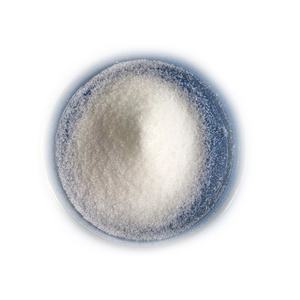





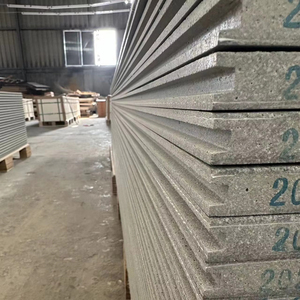







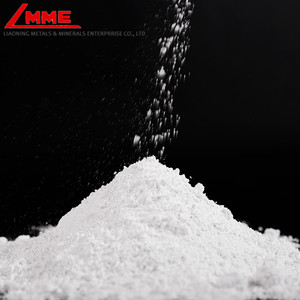

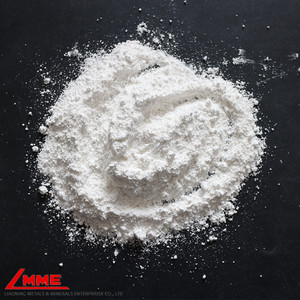
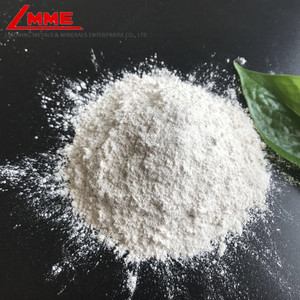












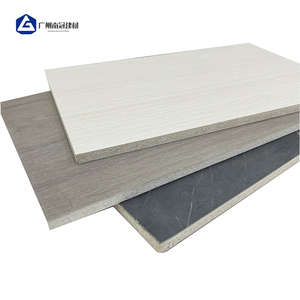





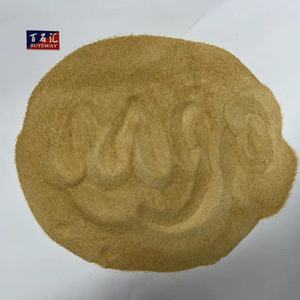
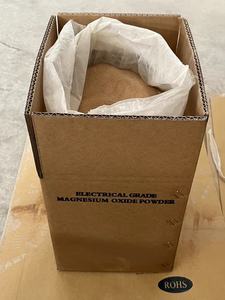
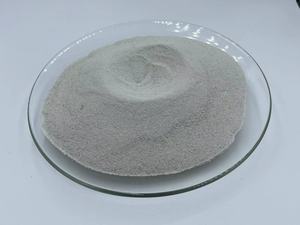
Magnesium oxide raw material exists in different types. They include:
Caustic calcined magnesite
Often called active magnesia, caustic magnesia calcined magnesite is obtained by heating magnesium carbonate to around 1000 °C. This process expels carbon dioxide, leaving behind pure magnesium oxide. The result is a highly reactive, fine-particle compound, often used in refractory materials and as an additive in agriculture. Thanks to its high surface area and basicity, it also finds applications in chemical processes that require magnesium ions.
Dead-burned magnesia
Also known as DBM, dead-burned magnesia is synthesized by heating periclase or magnesium oxide above 1500 °C. This process, known as dead burning, crystallizes the MgO structure, rendering it thermally stable and unreactive compared to active magnesia. DBM is the most hydrophilic magnesium hydrate, and its refractory bricks, or castables, are often used in the steel industry. DBM can also be used to make synthetic magnesite and dolomite through solid-state sintering.
Electrolytic magnesia
Electrolytic magnesia is manufactured through the electrolytic process using magnesium chloride extracted from seawater or salt lakes as the initial raw material. A magnesium iron alloy is produced during the electrolysis process. This alloy can be further processed to obtain high-quality magnesium oxide. EMG features exceptional purity and is often used in high-tech fields such as electronics and ceramics, where superior quality is paramount.
Hydrated magnesium oxide
Hydrated magnesium oxide results from the reaction of magnesium oxide with water, forming magnesium hydroxide. When heated, this compound loses water, producing pure magnesium oxide associated with a crystal hydrate structure. Commonly, hydrated magnesia contains crystals of MgO·7H2O or MgO·4H2O. The hydrate can be dehydrated to produce anhydrous magnesia. Hydrated magnesium is commonly used in the pharmaceutical industry, especially for preparing magnesium hydroxide, which is utilized in antacids. Its high purity makes it suitable for food-grade applications.
Indian magnesite
Indian magnesite refers to India-sourced magnesium carbonate mineral deposits, particularly within the state of Rajasthan. These native occurrences contribute significantly to the global MgO supply. They are used to produce magnesite. Indian magnesite features a characteristic light-colored crystalline structure, often resembling marble or chalk in its visual aesthetic.
Magnesium oxide powder has multiple industrial applications. They include:
Chemical industry
The chemical industry utilizes MgO predominantly as a catalyst and an alkaline agent during acid-neutralizing processes. Its function as a catalyst promoter is critical in synthesizing magnesium hydroxide, a compound largely used in producing magnesium carbonate, fertilizers, and other agricultural-related chemicals. In this industry, magnesium oxide basicity facilitates the synthesis of valuable chemicals like magnesium sulfate. Additionally, due to its thermal stability, magnesium oxide is used as a refractory material that lines furnaces and reactors for the chemical industry.
Construction industry
Magnesium oxide, or MgO, board has a wide application in the construction industry. This is due to its fire-resistant properties and ability to withstand moisture. Mgo in construction forms the basis of Mgo boards and panels used in wall and ceiling applications. These boards are good alternatives to drywall as they offer enhanced durability. Also, MgO has been applied in the construction of floors, roofs, and even external cladding.
Agriculture industry
Magnesium oxide plays the role of a vital nutrient in fertilizers targeting magnesium-deficient soils. The compound improves the crop’s ability to absorb essential nutrients like phosphorus and nitrogen. In the agriculture industry, MgO is often found in soil amendments and fertilizers. It enhances soil quality by improving its structure and promoting better drainage and aeration. Ultimately, these properties result in increased crop yield and overall improvement of plants' health and resilience.
Metallurgy
Magnesium oxide is a crucial floor material in the metallurgy industry. It purifies and dephosphorizes iron and steel during furnace linings in steel smelting. Moreover, MgO reduces the phosphorus content in pig iron, making it easier to control the final alloy's phosphorus concentration. Additionally, in non-ferrous metallurgy, MgO is essential in producing magnesium metal and alloys for aerospace and automotive applications that require lightweight and strong materials.
Pharmaceuticals
The pharmaceutical industry uses magnesium oxide as a supplement and as an antacid to relieve heartburn and indigestion. The MgO neutralizing acidity provides a buffer within the stomach environment, which reduces the overall acidity. Furthermore, MgO acts as a laxative in healthcare applications, promoting bowel movements in constipation treatment. With its high absorption ability, magnesium hydroxide is derived from MgO to produce magnesium, which supports bone health and muscle function. This makes it a vital component in nutritional supplements.
The commonly sold magnesium oxide crystals feature diverse specifications and characteristics. Here’s some of them:
Appearance
Commercially available magnesium oxide exists in diverse granular or crystalline forms. The magnesium oxide powder and granules are fine and white, while the crystalline variety has a rough texture and may display whitish or pale grey hues. MgO products have variable particle sizes depending on the intended utilization, which range from micro-mesh to coarse granules with larger grains. This is crucial for tunning reactivity or abrasion levels within different industrial setups.
Chemical composition
An ideal magnesium oxide contains 99% magnesium. A magnesium carbonate sample for agricultural use has 20% to 22% magnesium content and 9% to 11% calcium. It also contains silicon at 0.2% to 0.4%, iron at 0.1% to 0.3% calcium carbonate, and 0.5% to 6% insoluble matters like clay and quartz. This is usually measured in parts per million. The chemical structure of magnesium oxide consists of magnesium and oxygen connected to form a linear molecular arrangement. The magnesium crystals are made of magnesium atoms tightly packed together in a hexagonal close-packed structure.
How to use
Magnesium oxide supplements are used as a fertilizer by evenly spreading the recommended dosage over the soil (2 kg per acre, 1 kg over 500 square meters). Plants also absorb magnesium oxide as a feed additive. It can be mixed with animal feeds to improve their nutritional content. For preventive soil treatment, magnesium carbonate is tilled into the soil before planting crops. Magnesium oxide is used in construction as a dry mix to build walls. Mixing Mgo boards with magnesium oxide cement is used to patch materials.
Storage and handling
Storing magnesium oxide materials should be done in a cool, dry space, away from direct sunlight. The storage area should have low humidity and be free from incompatible substances like acids and moisture. Note that magnesium oxide is prone to caking when exposed to excessive humidity. This reduces its usability. Magnesium materials should be stored in closed containers to prevent dust generation and exposure to air within the storage area. In terms of handling, individuals ought to wear personal protective equipment (PPE) such as gloves, safety glasses, and masks. This protects them from potential dust inhalation or skin irritation.
Maintenance
The magnesium maintenance requirements vary depending on the particular industry application. However, general care involves maintaining the purity of MgO by preventing contamination from impurities. MgO used in refractories should be periodically inspected for wear and damage due to extreme temperatures. In agriculture, Magnesium hydroxide should be monitored for effective nutrient release.
Some of the quality and safety considerations for magnesium carbonate include:
Purity and quality standards
Magnesium carbonate quality in magnesium oxide manufacturing should meet particular purity standards. The MgO state should contain minimal impurities like heavy metals, silica, and other alkaline earth elements. Note that such contaminants affect the efficiency of end products across industries. For refractory applications, magnesium oxide should at least have 99% purity to withstand high temperatures without reacting with other materials. In agriculture, reduce burn or other negative encounters by ensuring magnesium carbonate has fewer than 1% soluble salts that may affect soil and plant health.
Safety
When handling magnesium oxide, individuals ought to wear appropriate PPE (personal protective equipment). This includes gloves, dust masks, and safety goggles to prevent skin irritation, inhalation, or eye contact. It’s also important to keep magnesium carbonate dry because it is highly flammable when wet. Magnesium carbonate should be stored in a secure and properly labeled container to mitigate any risks associated with exposure or accidents. If magnesium carbonate gets exposed to fire, it’s advised to use dry chemical extinguishers or carbon dioxide. Avoid using water because it can generate an explosive mixture.
Environmental considerations
The production and extraction of magnesium raw materials can have ecological impacts. This is especially so when mining magnesite is associated with habitat disruption and landscape alteration. Magnesium oxide dust can have adverse environmental effects. This is because its airborne particles settle on surrounding vegetation and water bodies. Thus, it’s crucial to mitigate such occurrence through proper emission control technologies.
Buyers should consider the following when purchasing magnesium oxide raw material:
Purity level
Buyers should get magnesium materials with the required purity, depending on the industry they are targeting. For instance, the refractor magnesium should be at least 98% pure. Within the pharmaceutical or food industries, MgO should be of food-grade or pharmaceutical-grade purity, at least 99.5% pure. Farmers should also consider the calcium carbonate content to ensure it’s at the right percentage for crops they intend to work with.
Sourcing
Farmers interested in magnesium fertilizer should source theirs from reliable mines where the ores are harvested. Those purchasing processed MgO should settle for suppliers with a proven track record of producing magnesium through calcination processes. Know the location of the mines and whether they are easily accessible. Also, verify if the MgO materials have been subjected to quality inspections by third parties.
MgO type
Farmers should determine which type of magnesium is ideal for them. This depends on the magnesium carbonate source they are working with and the temperature at which it’s calcined. Buyers should also consider sourcing hydrated MgO, which is useful in food and pharmaceutical applications. This is because it offers high reactivity and safety. For the construction industry, settle for MgO with higher than 1500°C calcination.
Market needs
Buyers should get materials that suit their immediate market needs. For example, if targeting markets with small crystals demands, get magnesium with smaller crystal sizes to enhance its effectiveness instance. When purchasing in bulk, they should settle for materials offering the maximum yield. Besides, magnesium hydrate can be suitable for cosmetics manufacturers.
Reputation
Business owners should get magnesium from suppliers with outstanding reviews. They should also request discounts and deals for purchasing in bulk. Magnesium carbonate materials that are a good deal offer low overhead costs to businesses. Also, get materials with diverse brand options for magnesium buyers' satisfaction.
Seller's guarantee
Farmers should settle for magnesium with a reasonable guarantee and return. Find out the time the seller takes to respond to quality claims and whether they accept returns in reasonable condition.
Several factors may affect the magnesium carbonate fertilizer price. These include mining MgO ore cost and the expenses of operating the mine. If electricity prices increase, farmers will also incur higher costs since electricity is required during the electrolysis of MgCl2 to produce magnesium oxide. Magnesium used in refractor fibers prices may also be affected by any increase in transportation costs. This includes any reductions in the availability of trucks or any increase in tolls. Any increases in taxes or fees paid to magnesium carbonate manufacturers will increase the overall farmer's costs.
Magnesium carbonate has low environmental impact and is highly sustainable. It’s a vital nutrient for plants, enabling them to synthesize chlorophyll. Moreover, it helps proteins move in and out of plant cells. Magnesium also supports the formation of DNA, which is essential for all living organisms. The element is the center of chlorophyll molecules. This allows plants to absorb light energy and carry out photosynthesis. This process results in oxygen production, essential for sustaining life. Therefore, magnesium is indirectly responsible for the production of nearly 50% of the oxygen in the atmosphere.
Applying magnesium oxide to soil lasts 3 to 4 months. After this, the magnesium fertilizerMgO begins to break down and gradually releases magnesium back into the soil. During this time, the magnesium carbonate remains present in the soil, supporting ongoing nutrient and water absorption by plants. Depending on soil conditions, ozone can remain in the ground for up to 6 months before it’s completely absorbed by root systems.
A large portion of magnesium carbonate used to make magnesium oxide crystals is mined directly from Earth’s crust. This is where magnesium carbonate mineral deposits exist. Also, some are sourced from seawater. Ocean water is a good source of magnesium chloride. After its extraction, the MgCl2 is subjected to a heating process where it’s mixed with lime. This forms a double carbonate compound, which is then thermally broken down through calcination to obtain pure MgO.